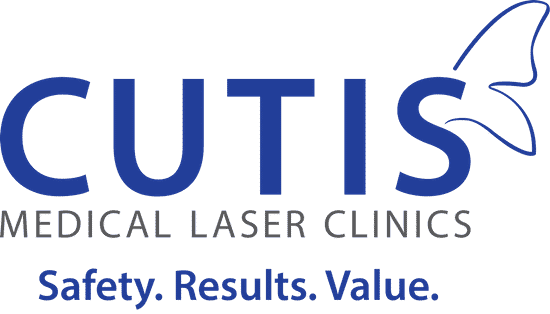While stretch marks are extremely common (about 80% have them), there is still a lot of misleading information about these lines and streaks. There are persistent misconceptions about who gets them, what causes them, where they appear, as well as the ways and treatments that can get rid of stretch marks.

If you too have these tiger stripes, love lines, or whatever you want to call them and are looking to reduce their appearance, it is best to start with the straight facts. Continue reading as we list down seven truths about stretch marks.
1. Stretch marks are a type of scar.
Medically known as striae, stretch marks occur due to the pulling of the skin caused by rapid growth or stretching. This causes tiny tears deep in the dermis, creating scars that appear as lines or streaks in the skin’s top layers.
The pulling of the skin, furthermore, may lead to abrupt changes in the collagen and elastin fibers, causing them to break or rupture. This may leave marks or stretch marks behind as the skin heals.
2. Pregnant women aren’t the only ones who get stretch marks.
It is true that stretch marks are more common in expecting women, with up to 90 percent of them getting these lines and streaks. This happens due to the rapid stretching of the skin to accommodate the growing child. Pregnancy, however, isn’t the only reason you can get them.
Stretch marks may form due to sudden weight gain or body growth. In fact, growth spurts during puberty can lead to stretch marks in many boys and girls. Other factors that can increase your risk of getting them include:
- Rapid weight gain and weight loss
- Muscle growth
- Family history of stretch marks
- Long-term use of corticosteroids
- Genetic disorders like Cushing’s syndrome or Marfan syndrome
Further reading: Stretch Marks in Men: Causes and Treatments
3. Stretch marks can be itchy.
This is especially the case for newer streaks, which can tend to be reddish, purplish, or reddish-brown. It is also normal for the skin to itch during the healing process, which is why you can get this sensation as the body repairs those tiny tears in your dermis. Early stretch marks may also feel a bit raised.
Fortunately, the bright reddish color and itchiness don’t last permanently. These streaks can turn lighter and become less visible. Just do take note that newer lines are easier to treat than mature stretch marks. This is because the presence of blood vessels allows them to be more responsive to treatment.
4. Stretch marks can appear almost anywhere on the body.
The stomach is the most common location of stretch marks, but they can also occur on different body parts where fat is usually stored. These include the hips, thighs, upper arms, breasts, and lower back.
Stretch marks also tend to appear in areas that have experienced too much stretching. They can show up on shoulders and chest areas, especially for those who work out with weights to build more muscle mass rapidly. And as they are more likely to be in areas where your body stores fat, you won’t get stretch marks on your face, hands, or feet.
5. Stretch marks won’t go away completely; they fade over time.
Just like other scars, stretch marks are permanent and may not be gone completely. It is good to know, however, that they become less noticeable with time. They may also fade in the succeeding months or years.
Keeping your skin moisturized helps in relieving itchiness and dryness, which can make stretch marks more visible. There is also the benefit of the skin appearing soft, supple, and healthy when it is moisturized.
6. Drinking water cannot prevent or reduce stretch marks.
There is no correlation between drinking H2O and stretch marks. While it has many health benefits, drinking water cannot prevent the formation of those lines and streaks or even treat them.
Staying hydrated, however, can help improve the appearance of your skin. Drinking enough water also keeps your body refreshed, as well as helps maintain skin elasticity. This is something that you should always do whether or not you have stretch marks.
7. In-office aesthetic treatments can help reduce their appearance.
There is no magic cream that can completely get rid of them, but there are aesthetic treatments that can improve their appearance. At Cutis, we have acoustic shockwave therapy that uses acoustic or radial waves to effectively target stretch marks, cellulite, and fatty deposits.
Shockwave therapies like X-Wave and Z Wave cause vibrations in the soft tissues, as well as improve blood flow in the treated area. This brings in oxygen and nutrients that nourish the tissues, as well as stimulate new collagen formation. This results in tighter and more elastic skin with a reduced appearance of cellulite and stretch marks.
We also have professional microneedling using Dermapen 4. This automated skin-needling device works by creating thousands of miniscule needle punctures in the skin’s outer layers. This breaks up uneven scar tissues and helps stimulate the production of collagen and elastin.
What makes Dermapen 4 a good option for these streaks is that it has a dedicated scar setting and protocol for the revision of deep and atrophic scars. It can treat post-acne, burn, contracture, surgical, and striae scars (both new and old stretch marks).
If you have stretch marks that you wish to treat or improve, don’t hesitate to reach out to us. Contact Cutis Medical Laser Clinics in Singapore today and schedule a consultation and body assessment with our aesthetic doctor.
- If you would like to be an informed patient, please contact us at +65-6801-4000 or
cutis@cutislaserclinics.com. - Cutis Medical Laser Clinics, 9 Scotts Road Pacific Plaza, Scotts Medical Center #08-07, Singapore – 228210
+65-6801-4000 - cutis@cutislaserclinics.com
